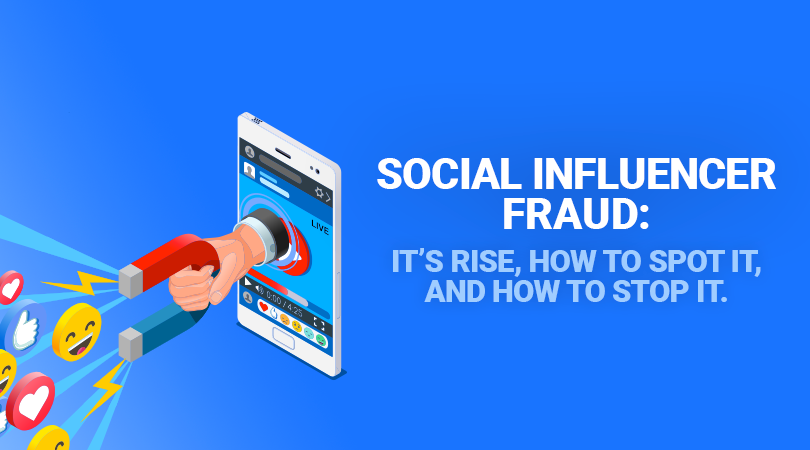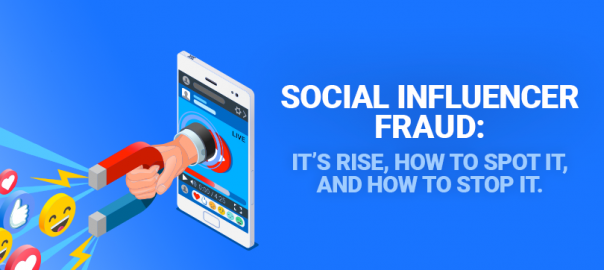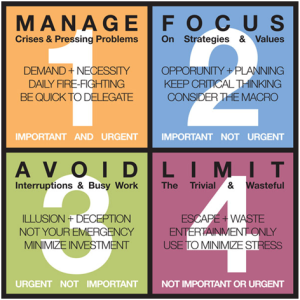— August 20, 2018
Influencer Marketing is one of the fastest growing marketing channels, with 32% of marketers surveyed last year by Marketing Dive and Bloglovin saying that influencer marketing was essential to their strategy. 63% of those surveyed also said that they had increased their budget for influencer marketing.

Influencer Earnings
With this in mind, from an influencer’s point of view, there’s some serious money to be made. For example, YouTube star PewDiePie’s annual earnings were around $ 12.5m last year, Kylie and Kendall Jenner commanding around $ 400,000 per Instagram post, and Zoella, one of YouTube’s first stars, still earning £50,000 a month from her social media activity. Of course, not every influencer will cost a small fortune to work with, but those who are better known and have the biggest followings are sure to charge a considerable amount.
However, with this increase in demand for social media influencers, there has also been a rise in the number of businesses and brands falling victim to social influencer fraud, as people see an opportunity to capitalise on the unsuspecting marketer’s determination to see their brand succeed online.
It’s not gone unnoticed…
In fact, even the most savvy marketers can get caught out, and the rise of influencer fraud hasn’t gone unnoticed by some major players in the marketing industry. Unilever’s CMO Keith Weed has recently called for ‘urgent action’ on the issue of influencer fraud, and offered his insight into how to clean up the influencer landscape:
“The key to improving the situation is three-fold: cleaning up the influencer ecosystem by removing misleading engagement; making brands and influencers more aware of the use of dishonest practices; and improving transparency from social platforms to help brands measure impact. We need to take urgent action now to rebuild trust before it’s gone forever.”
Other brands such as L’Oreal, eBay and Diageo have also supported the need for a way in which to crackdown on influencer fraud, with a commitment from them to ‘reevaluate’ what an influencer is, and in some cases, to stop working with influencers who have fake followers.
How can you tell if it’s influencer fraud?
Essentially, there is no industry-standard metric to determine whether or not an influencer’s followers are fake. However, with some careful research into the number of comments, the type of comments, and engagement rate, you will begin to be able to weed out the more obvious cases. By using a tool such as BuzzSumo, which as well as allowing you to source influencers, also lets you filter them by reach, authority and engagement. If an influencer has a high follower count, but a low engagement rate, then that could indicate that a vast majority of their followers are fake, and therefore you should avoid using them. One of the key aims of using influencers is to engage with their audience, who are also your audience, but if their content isn’t engaged with, then it’s not going to reach that audience.
The platforms to watch
Of course, with the Cambridge Analytica scandal still very much at the forefront of people’s minds, Facebook will be being watched by many marketers to see how it deals with the issue of influencer fraud, and Twitter have recently made a significant change to remove bots and fake accounts.
However, it’s platforms such as Instagram, YouTube and Snapchat which are likely to come under the most scrutiny.
“2018 is the year when social media must win trust back,” Keith Weed, Chief Marketing Officer, Unilever.
A recent study of influencers and marketing spend by CamapignDeus revealed that 12% of UK influencers bought fake Instagram followers in the first six months of the year, and engagement rates for most influencers drop off rapidly when they post branded content.
The study, which analysed around 700,000 posts, also found that smaller brands who undertook influencer marketing campaigns also commanded a greater ROI potential from their activity, by working with ‘micro-influencers’ – those who have less than 75,000 followers.
It’s not just platforms or individuals…
As is arguably expected with an issue such as this, it’s not just individuals or platforms involved, there are entire companies doing it. A story earlier this year in the New York Times outed Devumi, a company which appeared to make its money by generating fake followers for influencers looking to boost their follower count. Fortunately, Eric Schneiderman, New York State’s Attorney General, opened an investigation into the company’s business practices. Having said that, six days after the article was published, Devumi issued a statement which read :
“The company does not create accounts nor bots. Devumi uses publicly available third party services and is a reseller of products. Regarded as a market leader, the company has internal procedures to test everything that they buy to ensure they bring the best in service to the market.”
As far as we aware, at the time of writing, Devumi are still under investigation.
In summary
To conclude, we look at some statistics around influencer content. According to data from Digiday published in 2017:
- A single day’s worth of posts tagged #sponsored or #ad on Instagram contained more than 50 percent fake engagement.
- Out of 118,007 comments, only 20,942 were not made by bot accounts.
- Bot comments are responsible for over 40 percent of total comments for more than 500 of 2,000 sponsored posts made each day.
The Committee of Advertising Practice and Incorporated Society of British Advertisers have recently taken a look at reviewing guidelines and contracts between advertisers and influencers, with the Competition and Markets Authority warning that they would take a tough approach to social media campaigns that mislead consumers.
However, influencer fraud is still an issue in the marketing industry, and although the right noises are being made by the heavy hitters, it appears that very little is being done to combat it. If you’re planning an influencer campaign, ensure to thoroughly check them out. Go back through historical posts, look at the likes and comments, and analyse their engagement rate. This will give a good indication as to whether that influencer will deliver for your campaign.
Digital & Social Articles on Business 2 Community
(83)








